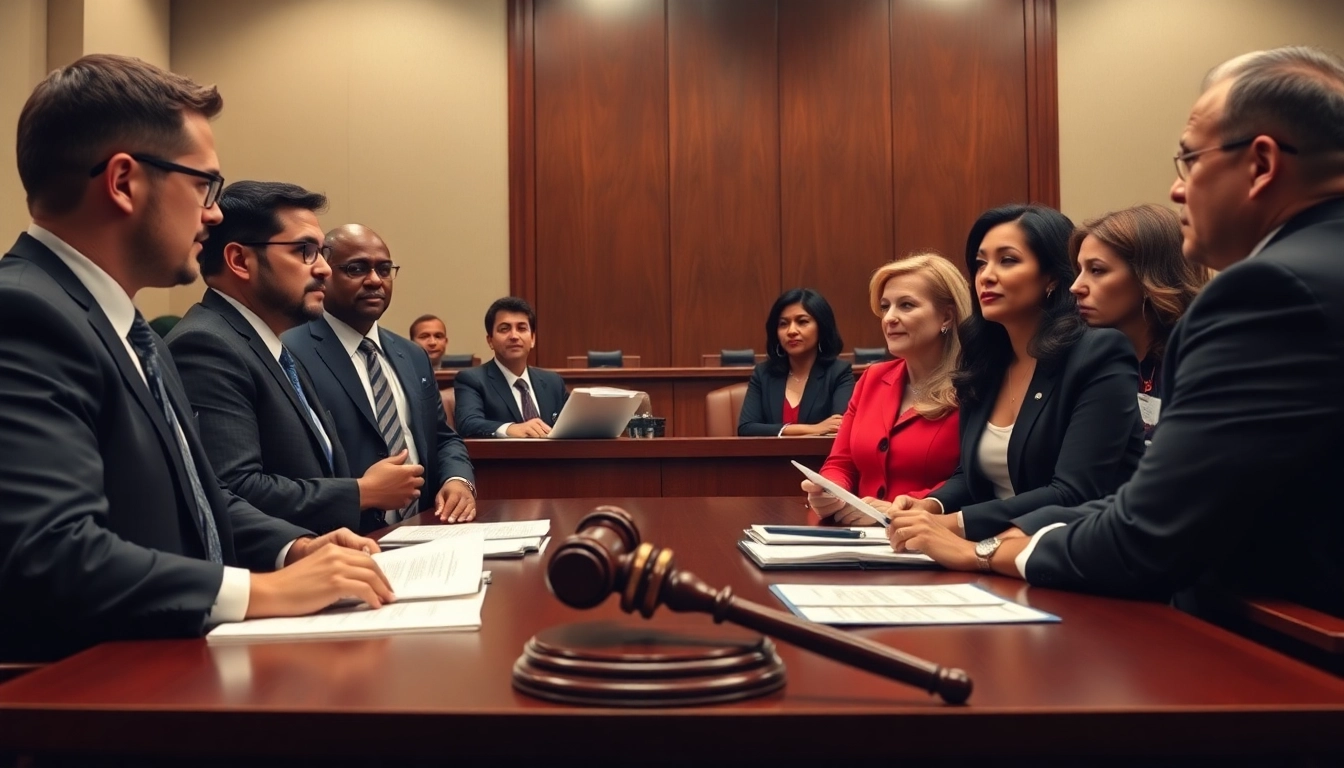In the dynamic sphere of legal marketing, understanding the nuances of Mass Tort Marketing is vital for legal practices aiming to connect with and serve clients effectively. As mass tort cases become increasingly prevalent, attorneys and law firms must grasp the essentials of effective marketing strategies to reach the right audience and achieve substantial results.
Understanding Mass Tort Marketing
What is Mass Tort Marketing?
Mass tort marketing refers to the strategies and practices that legal professionals use to attract clients involved in mass tort cases — events that cause harm to a large group of people, such as class-action lawsuits against defective products, pharmaceutical drugs, or environmental disasters. The primary goal is to generate awareness of legal rights and options among potential claimants, enabling them to seek justice and compensation. Unlike traditional marketing, mass tort marketing is typically more specialized, focusing on educating potential clients about the specifics of their situations and the legal avenues available to them.
Key Benefits for Legal Practices
- Increased Visibility: Effective mass tort marketing helps legal firms establish a strong online presence, making it easier for potential clients to find them through searches related to their issues.
- Targeted Lead Generation: By focusing on a specific demographic and psychographic profile, firms can generate high-quality leads that are more likely to convert into clients.
- Reputation Building: Firms can build authority and trust in their niche, further establishing themselves as experts in mass tort cases.
- Scalable Outreach: Mass tort cases often involve numerous potential clients; thus, marketing campaigns can scale quickly to reach a broad audience efficiently.
Common Misconceptions
Despite its advantages, many legal professionals harbor misconceptions about mass tort marketing. One common belief is that it is solely focused on advertisements. While visibility is an essential aspect, the most successful campaigns prioritize connecting with potential clients through education and support. Another misconception is that mass tort marketing is only relevant for large law firms. In reality, even smaller firms can leverage targeted marketing strategies effectively. Understanding these aspects is crucial for creating successful outreach efforts.
Identifying Target Audiences in Mass Tort Cases
Defining Your Ideal Client Profile
Defining an ideal client profile is integral to successful mass tort marketing. This involves identifying characteristics such as demographics (age, income, location) and psychographics (values, beliefs, lifestyle choices) of potential clients. Attorneys should consider the types of cases they handle and the typical characteristics of individuals who have experienced similar harms. By clearly defining ideal client profiles, law firms can tailor their messaging and marketing strategies to resonate deeply with their target audiences.
Researching Demographics and Psychographics
Once the ideal client profile is established, conducting thorough research on demographics and psychographics becomes essential. Tools like surveys, social media analytics, and market research can provide insights into what motivates potential clients, their pain points, and their preferred communication channels. Understanding these facets can enhance the effectiveness of outreach campaigns, allowing legal practices to craft messages that speak directly to the needs and concerns of potential clients.
Utilizing Social Media for Outreach
Social media platforms serve as powerful tools for mass tort marketing, enabling legal firms to engage with potential clients in real time. By creating informative content, sharing success stories, and utilizing targeted advertising, firms can effectively reach and resonate with their ideal audiences. Social media also provides a space for interaction and dialogue, allowing potential clients to ask questions, share their experiences, and establish connections with legal professionals. Regular engagement on platforms like Facebook, Instagram, and LinkedIn can significantly enhance a firm’s visibility and reputation.
Effective Strategies for Mass Tort Campaigns
Digital Advertising Techniques
Digital advertising is pivotal in mass tort marketing. Employing techniques like pay-per-click (PPC) campaigns, search engine optimization (SEO), and social media ads can help legal practices target specific search terms related to mass torts. Keywords relating to specific cases or issues (e.g., “defective product lawsuits” or “asbestos claims”) should be integrated not only in ads but also throughout online content. Moreover, retargeting strategies enable firms to reach out to individuals who have previously shown interest, thereby increasing conversion rates.
Building Your Brand Authority
Establishing brand authority is a fundamental strategy in mass tort marketing. Legal firms should focus on creating high-quality content that showcases their expertise, such as blog posts, articles, webinars, and videos. By providing valuable insights and information about mass tort cases, firms position themselves as knowledgeable and trustworthy resources. Engaging with influential figures in the legal industry or participating in relevant discussions on social media platforms can further enhance brand visibility and authority.
Content Marketing for Engagement
Content marketing plays a crucial role in engaging potential clients. Legal firms should develop comprehensive content strategies that focus on educational and informative materials to address common questions or concerns about mass tort cases. This could include how-to guides, infographics, success stories, and case studies that enhance understanding and establish trust. Content should be optimized for both search engines and the audience’s needs, ensuring that it is discoverable and relevant.
Measuring Success in Mass Tort Marketing
Key Performance Indicators (KPIs)
Measuring the success of mass tort marketing campaigns requires the identification and monitoring of key performance indicators (KPIs). Common KPIs include website traffic, conversion rates, cost per lead, and engagement rates across social media platforms. Tracking these metrics provides insights into whether the marketing strategies employed are effectively reaching and engaging the target audience, allowing for data-driven decision-making.
Tools for Tracking Campaign Performance
Several tools are available to help legal professionals track their marketing campaign performance. Google Analytics is a popular choice for monitoring website traffic and user behavior. Social media analytics tools, such as Facebook Insights and Hootsuite, can help law firms track engagement and follower growth. Additionally, email marketing platforms often come with their analytics dashboards to provide insights into open rates and click-through rates, informing strategies for further outreach.
Adjusting Strategies Based on Data
Data-driven adjustment of marketing strategies is essential for continuous improvement. Regularly analyzing campaign performance and KPIs allows firms to identify what is working and what is not. If a specific advertising channel is underperforming, legal practices can pivot their strategies, reallocating resources to more successful channels or refining messaging to better resonate with target audiences. This adaptability can make a significant difference in the overall effectiveness of mass tort marketing efforts.
Case Studies: Successful Mass Tort Marketing
Analyzing Successful Campaigns
Looking at successful mass tort marketing case studies can provide valuable insights into effective strategies. For instance, a law firm that focused on viral content through social media, alongside targeted PPC ads, saw a substantial increase in inquiries for a specific pharmaceutical case. Their strategy involved creating shareable graphics and personal stories that resonated with viewers, coupled with easy-to-digest information about the judicial process. Analyzing these successful campaigns can highlight effective tactics and inspire innovative approaches.
Lessons Learned and Best Practices
Through analyzing successful campaigns, numerous lessons can be gleaned. One key takeaway is the importance of storytelling in content creation. Clients want to relate to their legal representatives on a personal level, and emotional storytelling can make complex legal proceedings more approachable. Additionally, proactive engagement strategies, offering free consultations, and transparent communication not only build trust but also enhance client retention. Best practices also include continuous evaluation and adaptation of campaigns to remain relevant in a fast-evolving digital landscape.
Future Trends in Mass Tort Marketing
The landscape of mass tort marketing is continually evolving, and staying ahead of emerging trends is vital. One significant trend is the increasing reliance on video content, which has proven to engage audiences more effectively than traditional text-based content. Alongside this, the integration of artificial intelligence and data analytics into marketing strategies allows for more personalized client outreach by predicting behaviors and preferences. Keeping abreast of these trends enables legal practices to remain competitive and effective in their marketing efforts.



